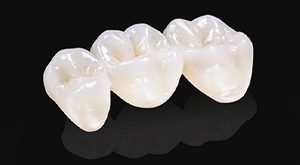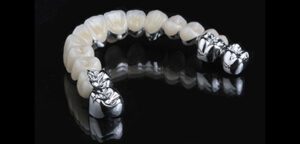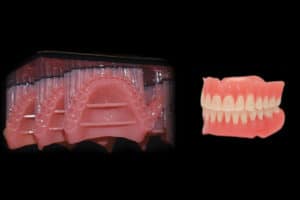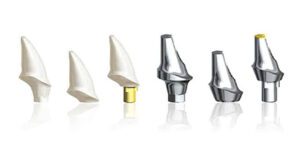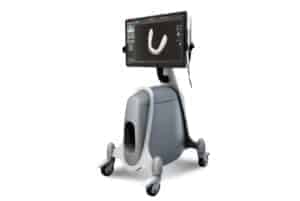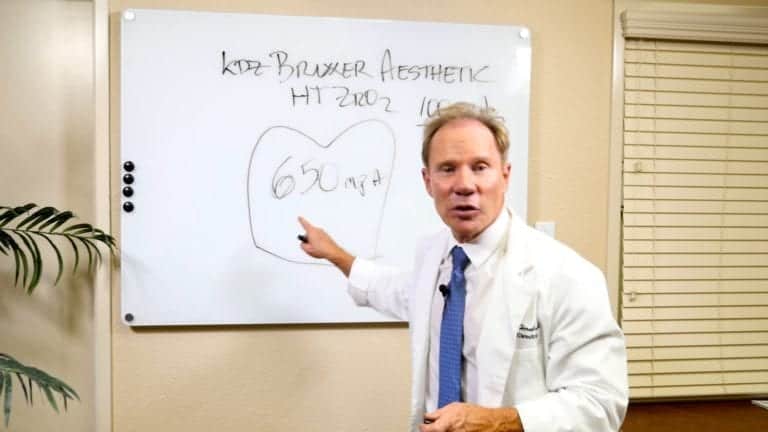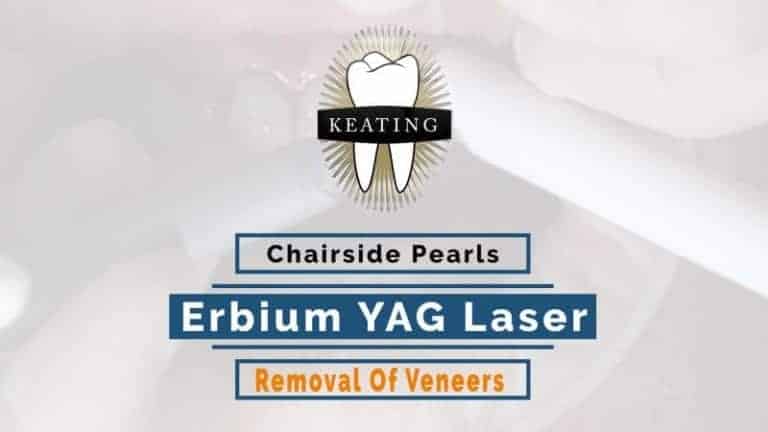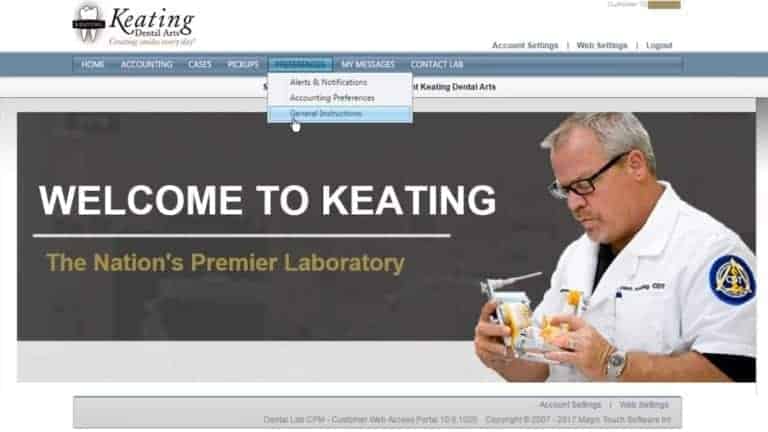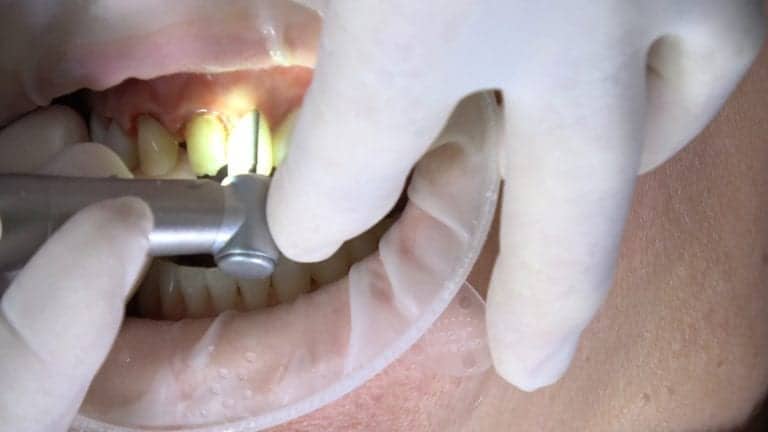November 26 2015 — Dr. David Hornbrook (Clinical Director of Education & Technology) at Keating Dental Lab does a short lecture on new and esthetic choices for zirconia crowns and bridges.
Video Transcript:
Dr. Hornbrook: Hello I’m Dr. David Hornbrook, the clinical director of education and technology here at Keating Dental Lab in Irvine, California. Keating is a full service dental lab and we’re very excited about all the very cool things we’re doing here at Keating Dental Lab. Today I want to talk to you about the fastest growing restoration in indirect dentistry, and that’s the Zirconia Oxide Crown. Here at Keating Dental Lab, we offer basically three products in this category of Zirconia.
The first one is what we call the KDZ Bruxer. This is a monolithic crown that typically we would use in the posterior, in molars. Now the interesting thing about the KDZ Bruxer, it’s the strongest restoration we have. The flexural strength, and that basically represents the durability of the ceramic, the flexural strength of the Bruxer is about 1200 mega-pascals. To give you a reference what that means is comparing it to a PFM, the porcelain on every PFM you’ve ever done or will ever do, it has a flexural strength of 100 mega-pascals. Theoretically, durability and the strength of a KDZ Bruxer is ten to twelve times stronger than of a PFM, especially in areas that undergo stress. That would be marginal ridges, functional cusp, central fossa. Ten to twelve time stronger.
Now the KDZ Bruxer, typically we only use it for second or first molars, primarily because it’s a little bit opaque. I probably would not use it in the anterior, there’s better materials that I’ll talk about, but it is the strongest. When we’re looking at second molars, where it’s closer to the hinge axis, more stress, the KDZ Bruxer is excellent for that. You can cement it with anything you want. You could temporarily cement it, you could bond it in a place on short preps, you could use a resin ionomer, you could use a glass ionomer, whatever you prefer. Because of the strength, we can cement it with anything. [00:02:00] That’s a KDZ Bruxer. Molars, both mandibular and maxillary molars, or as a framework for a multi unit bridge in the posterior. We can actually do full-span 14 unit bridges if we wanted to out of this material. 4 to 5 unit bridges in the posterior, excellent for this material because it’s tooth colored and it’s strong. The fit is excellent because it utilized [CAD-CAM 00:02:24] through the entire process. That’s the KDZ Bruxer.
The second material in this category of zirconia is what we call the KDZ Bruxer® Aesthetic. Now this is a relatively new material in dentistry. It has the strength of zirconia but the aesthetics that we see with lithium disilicate, or even the glass reinforced ceramics. Now the aesthetic, again typically we would do single crowns, but not only posterior like we saw the Bruxer because the translucency. A generic term for this would be HT zirconia, or high-translucency. The aesthetics rival that of most of our other ceramic systems. We could use for an anterior crown , we can use it for a three unit anterior bridge. I use this a lot for single crowns because the flexural strength. As I mentioned before where a PFM, the porcelain has flexural strength of 100, this material has a flexural strength 650 mega-pascals.
You see, we’re five to six times stronger than that of a porcelain fused to metal crown. Again, areas that are undergoing stress. That would be marginal ridges, central fossa, functional cusp. Also, this is almost twice the strength that we see with lithium disilicate, which has become kind of a [00:04:00] mainstay for single crowns in the posterior. We have a material that rivals its aesthetic value yet is significantly stronger. This all is fabricated under CAD-CAM so the accuracy is very good. Cost is unbelievably low compared to some of lithium disilicate systems. Excellent system. Single crowns. We’re not going to do any bridges with this, except in the anterior three units, or we can do anterior crowns. I wouldn’t do veneers with material just because the bondability is not as high we see with some of our other ceramics.
The third product is what we call the KDZ Ultra. Now this material still utilized zirconium oxide but only as a framework. We could have, just like a PFM, we could have a coping but instead of being metal, it would be zirconia. Relatively translucent at this thinness, and then we overlay with beautiful ceramic. This is the Ultra. The advantage of this, we’re going to get aesthetics that have the depth that we see with some of our beautiful restorations that are layered in multiple layers. Where do I like to use this? In the anterior, multiple unit bridges. As I mentioned earlier, the KDZ Bruxer® Aesthetic can only be used with a three unit bridge. If I was going to do a bridge, let’s say from canine to canine, six units, I would use KDZ Ultra. The zirconium becomes the framework because the flexural strength of this framework in the Ultra is approximately 1200 mega-pascals. You will not break that. The thinness makes it relatively translucent, it’s certainly not the ugly [00:06:00] metal that we see with a PFM. We can overlay with all this cool material. Again, this can be a ten unit bridge if we needed it to. I’ve lots of six and seven unit bridges utilizing KDZ Ultra.
The other cool thing about KDZ Ultra is you can design the framework, or we can at the dental lab because of CAD-CAM technology, pretty much any way you want. Let’s say we have a mandibular premolar, it’s part of the aesthetic, it could be a maxillary premolar, part of the aesthetic zone. We would like something to be as aesthetic as possible and as strong as possible. Maybe this premolar is in abutment of a four unit bridge, so we have to use a relatively opaque zirconia. We want optimal aesthetics, this is the facial or the buckle. We want optimal aesthetics but we need maximum strength for the connector, or certainly the central fossa, any functional cusp. What we can do is we can actually, and again this is done through CAD-CAM, we could design this restoration so that this would be our Bruxer material. The strongest material we have, 1200. Then we overlay with this beautiful, and we use noritake which I think is the most beautiful ceramic to overlay any zirconia, in the aesthetic zone. This becomes this beautiful layer of ceramic. We get the advantage of beautiful aesthetics that would certainly rival our lithium disilicate or our glass [loose reinforced 00:07:33] ceramic, and we get the strength of zirconia.
Hopefully that certainly answers some of the questions that you may have, or certainly eliminates some of your confusion with some of our zirconium materials. If you’re ever in the Southern California area, Keating Dental Lab is in Irving, California. About five miles from Disneyland, about five miles from Newport beach. We’d love to have you stop by.

